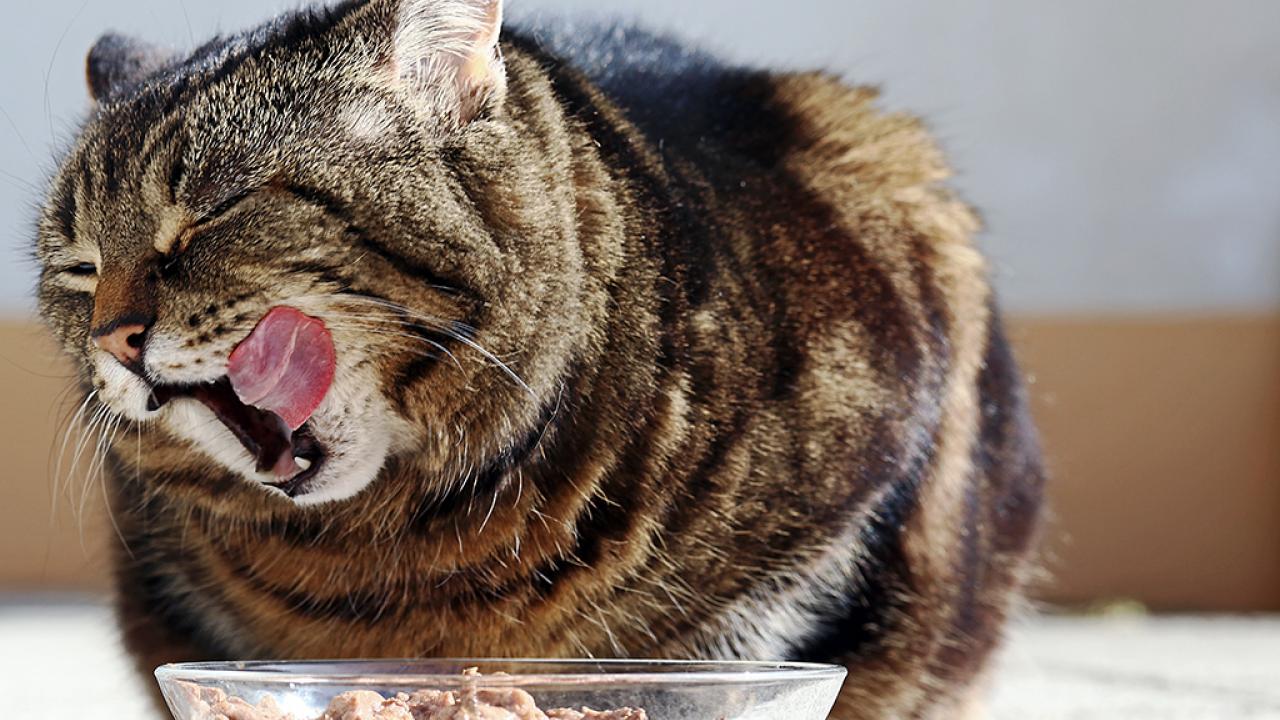Quick Summary
- First study to examine homemade recipes for healthy adult cats
- Analysis found no homemade recipe provided all essential nutrients in recommended amounts
- Some recipes contained ingredients potentially toxic to cats
One quick Google search can net hundreds of homemade cat food recipes, but a new study from researchers at the University of California, Davis, finds most are unlikely to provide cats all their essential nutrients. Some recipes could also contain ingredients potentially toxic to cats.
The study, published in the Journal of the American Veterinary Medical Association, is thought to be the first to examine homemade recipes for healthy adult cats. Researchers evaluated 114 recipes from online sources and books, written by nonveterinarians and veterinarians. Forty percent of the recipes did not provide any feeding instructions, and the remainder of them lacked detail or were unclear.
“Only 94 recipes provided enough information for computer nutritional analysis and of those none of them provided all the essential nutrients to meet the National Research Council’s recommended allowances for adult cats,” said lead author Jennifer Larsen, a veterinary nutritionist with the UC Davis School of Veterinary Medicine.
Recipes lacked nutrients regardless of the source or whether they were written by veterinarians, although those authored by veterinarians had fewer deficiencies in essential nutrients. Most recipes were lacking concentrations of three or more nutrients, with some lacking adequate amounts of up to 19 essential nutrients. Furthermore, many recipes had severe deficiencies, providing less than 50 percent of the recommend allowances of several essential nutrients including choline, iron, zinc, thiamin, vitamin E and manganese.
Whether these recipes would harm cats would vary based on feeding instructions, the length of time the cat has been on the diet, the health of the cat and the degree of the recipe’s nutritional deficiency. Researchers found just five recipes, all from veterinarian authors, that met all but one of the essential nutrients.
Some recipes more concerning
Seven percent of the recipes called for ingredients that are potentially toxic to cats, including garlic or garlic powder, onions and leeks. Researchers also found recipes that called for raw animal products without mentioning potential risks of bacterial contamination. Some recipes that included bones neglected to mention the importance of grinding them to prevent gastrointestinal tears.
Larsen said there was a big surge in cat owners switching to homemade cat food recipes after toxic substances were found in commercial pet food imported from China more than a decade ago. Some cat owners choose homemade recipes because they want more control over their cat’s diet. Others believe their cat should have a vegetarian diet, or one with sustainably sourced or organic ingredients. Larsen said cat owners should be cautious about homemade recipes.
“Homemade diets are not necessarily better,” said Larsen. “If you are going to use one, you have to make sure you do it safely and they should be balanced and appropriate for your individual cat.”
Larsen said cat owners should not be afraid of commercial diets, but recommends cat owners who desire a homemade diet consult with a board-certified veterinary nutritionist. They specialize in formulating homemade diets for pets.
Media Resources
Amy Quinton, News and Media Relations, 530-752-9843, amquinton@ucdavis.edu
